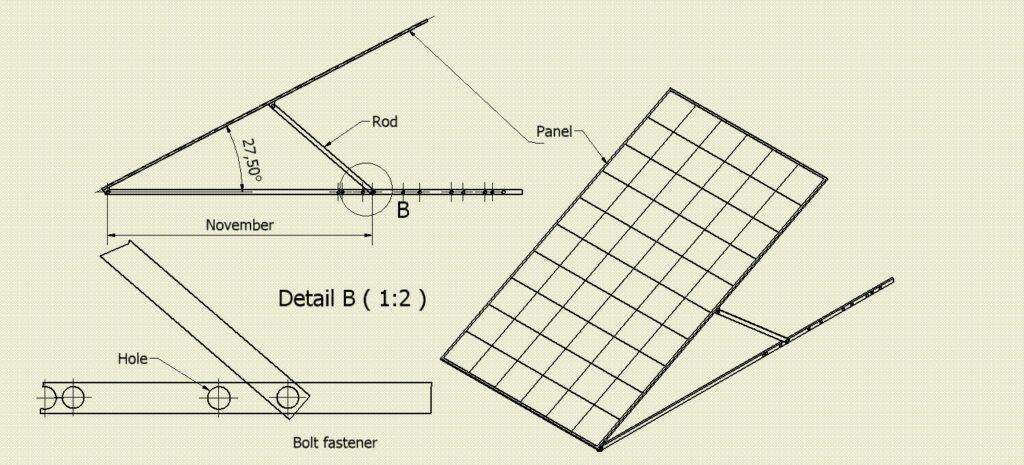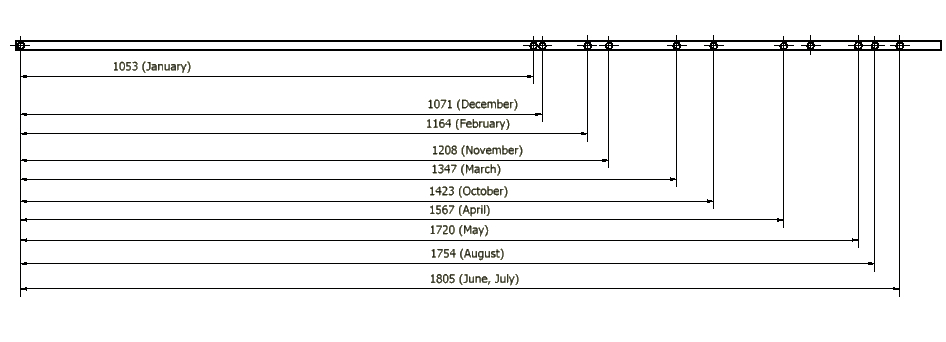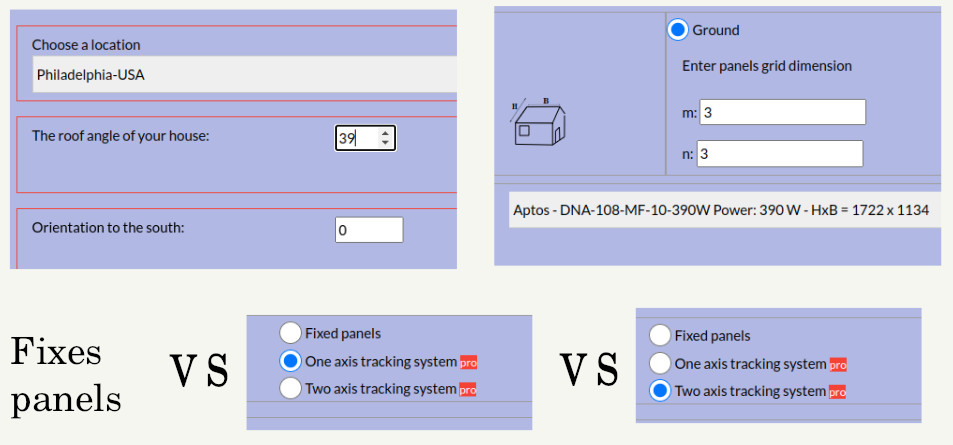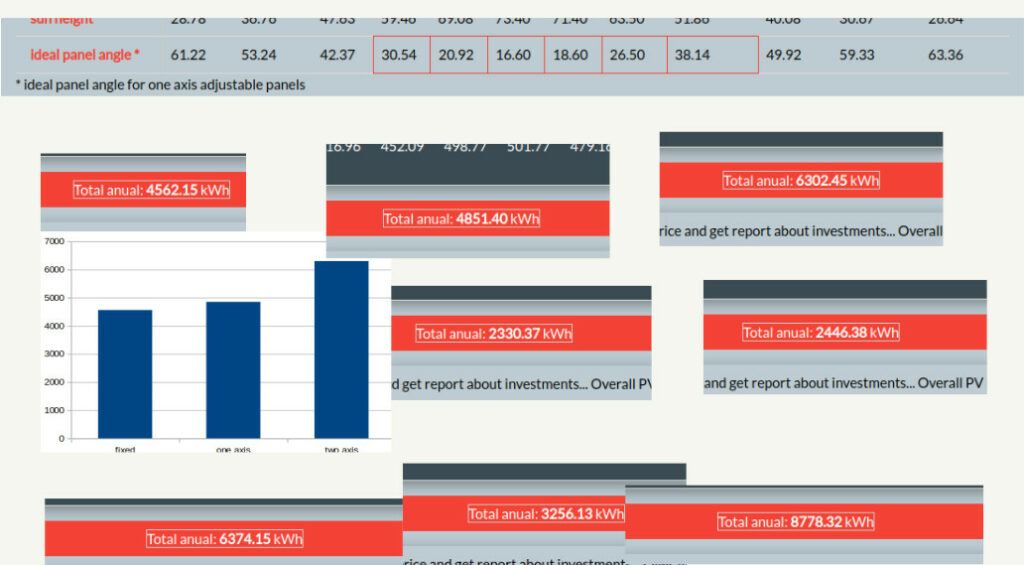What is a single-axis solar tracker?
Single axis solar tracker is a mechanical system that serves to rotate the solar panels around one axis in order to achieve the most favorable angle in order to maximize the use of the solar rays that fall on them. Let’s not forget this angle: the incident angle should be as close as possible to 0 (cos(0) = 1).
Of course, in order to achieve this condition, it is necessary to rotate the solar panels in two axes (dual axis tracker), but that system is a bit more complicated and is discussed in another text.
Division of single axis trackers by axis geometry
The solar panels in the single-axis system rotate around an axis that can be
1) vertical in relation to the ground
2) horizontal (parallel to the ground)
3) at an angle to the ground
Vertical axis
The solar panels rotate to follow the sun from east to west during the day. The tilt angle is constant.
Horizontal axis
The solar panels are rotated so that their tilt angle changes. They are fixed or much as possible towards the south. The tilt angle is going to change every month.
This type of tracking system is the subject of further analysis.
Axis at an angle to the ground
This system rotates around an axis that is at an angle to the ground. That axis projection is usually the north-south direction line.
This system is closest to the dual axis tracking system, and more will be said about it in another post.
Division according to the mode of operation
In order to rotate the panels, it is necessary to invest in mechanical work. That work can be
a) manual drive
b) mechanical drive
Mechanical drive implies the use of power transmission (gears, hydraulics, pneumatic, etc.).
A manual drive is cheaper, does not require the above-mentioned assemblies, and you can make it yourself.
Manual drive
I assume you are all familiar with the concept of manual panel angle adjustment.
Of course, nothing has to be done with raw power; mechanical aids can and should be used to adjust the angles of the PV module setting.
The tilt angle needs to be adjusted once a month, 12 adjustments a year, and that’s it.
The simplest system is the bed layout, similar to adjusting the inclination of a deckchair on the beach (horizontal axis).
We will use the SPAC application for a short analysis of energy gain.


Profit analysis
First, we enter the data for Philadelphia the optimal angle for the fixed panel is approximately equal to the latitude.
| Mode | Power[kWh] | Gain |
|---|---|---|
| fixed | 4562 | |
| one axis | 4851 | 6.33 % |
| two axis | 6302 | 38.14 % |
| Mode | Power[kWh] | Gain |
|---|---|---|
| fixed | 2330 | |
| one axis | 2446 | 4.98 % |
| two axis | 3256 | 39.74 % |
Port Sudan is the next destination, a city in the Sahara.
| Mode | Power[kWh] | Gain |
|---|---|---|
| fixed | 6374 | |
| one axis | 6759 | 6.2 % |
| two axis | 8778 | 37.72 % |
| Mode | Power[kWh] | Gain |
|---|---|---|
| fixed | 5963 | |
| one axis | 6350 | 6.49 % |
| two axis | 8232 | 38.05 % |


Conclusion
Is the single-axis bed layout worth the investment for a gain of only 6%? I think it is for a larger number of panels that can be easily adjusted monthly.
For example, if we had a mini-power plant with 90 panels and assumed an electricity price of 0.15 USD/kWh, the annual profit would increase by 170 USD.
For a smaller number of panels or panels placed on the roof at an angle, for cloudy areas it is unsuitable to use this system.

